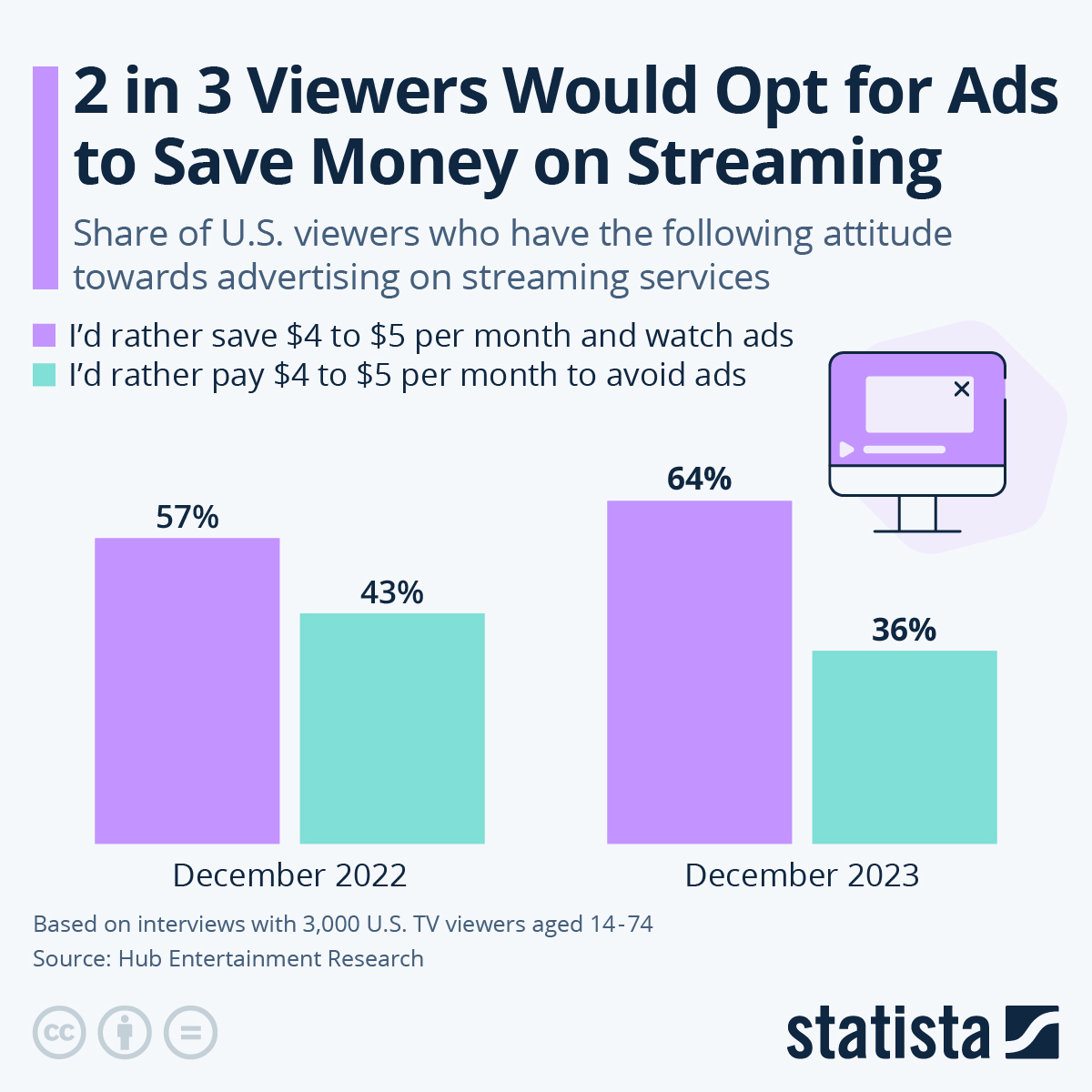
Following in the footsteps of Netflix, Disney+ and HBO Max, Amazon started including ads before and during playback of movies and TV shows on Prime Video on January 29.
However, as Statista's Felix Richter reports, as opposed to its competitors, which added a cheaper, ad-supported tier to its existing subscription options, Prime members will automatically start seeing ads unless they pay $2.99 for a new ad-free option.
When Amazon first announced its plans to bring ads to Prime Video last September, it explained that it would do so to "continue investing in compelling content and keep increasing that invetment over a long period of time." At the same time, the company promised that there would be "meaningfully fewer" ads on Prime Video than on linear TV or on other streaming services, which is something that users will ultimately have to judge.
Generally speaking, viewers, at least in the United States, aren't as averse to watching some ads as one might think.
Quite the opposite in fact. According to a December 2023 survey from Hub Entertainment Research, almost two in three Americans would opt for an ad-supported streaming option if it meant they would save $4 to $5 a month. At the other end of the scale, 36 percent of respondents said they'd rather pay that amount to avoid ads.
You will find more infographics at Statista
Interestingly, the willingness to accept ads for cost savings has increased over the past year, possibly indicating that consumers are looking for ways to trim their streaming budgets without giving up too much or that the introduction of ad-supported tiers by more and more streaming providers has normalized ads in the SVOD space.
It remains to be seen how Amazon's introduction of ads will be received by its subscribers. After all, Prime members aren't given the chance to save money.
Instead, they're paying the same for a slightly worse experience or are forced to pay an additional fee to continue watching their favorite content ad-free.
Following in the footsteps of Netflix, Disney+ and HBO Max, Amazon started including ads before and during playback of movies and TV shows on Prime Video on January 29.
However, as Statista’s Felix Richter reports, as opposed to its competitors, which added a cheaper, ad-supported tier to its existing subscription options, Prime members will automatically start seeing ads unless they pay $2.99 for a new ad-free option.
When Amazon first announced its plans to bring ads to Prime Video last September, it explained that it would do so to “continue investing in compelling content and keep increasing that invetment over a long period of time.” At the same time, the company promised that there would be “meaningfully fewer” ads on Prime Video than on linear TV or on other streaming services, which is something that users will ultimately have to judge.
Generally speaking, viewers, at least in the United States, aren’t as averse to watching some ads as one might think.
Quite the opposite in fact. According to a December 2023 survey from Hub Entertainment Research, almost two in three Americans would opt for an ad-supported streaming option if it meant they would save $4 to $5 a month. At the other end of the scale, 36 percent of respondents said they’d rather pay that amount to avoid ads.
You will find more infographics at Statista
Interestingly, the willingness to accept ads for cost savings has increased over the past year, possibly indicating that consumers are looking for ways to trim their streaming budgets without giving up too much or that the introduction of ad-supported tiers by more and more streaming providers has normalized ads in the SVOD space.
It remains to be seen how Amazon’s introduction of ads will be received by its subscribers. After all, Prime members aren’t given the chance to save money.
Instead, they’re paying the same for a slightly worse experience or are forced to pay an additional fee to continue watching their favorite content ad-free.
Loading…





